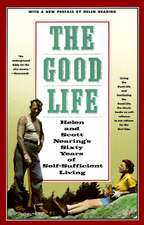Case Studies in Human Ecology
Editat de Daniel G. Bates, Sarah H. Leesen Limba Engleză Hardback – 30 iul 1996
| Toate formatele și edițiile | Preț | Express |
|---|---|---|
| Paperback (1) | 950.84 lei 6-8 săpt. | |
| Springer Us – 30 iul 1996 | 950.84 lei 6-8 săpt. | |
| Hardback (1) | 957.32 lei 6-8 săpt. | |
| Springer Us – 30 iul 1996 | 957.32 lei 6-8 săpt. |
Preț: 957.32 lei
Preț vechi: 1167.45 lei
-18% Nou
Puncte Express: 1436
Preț estimativ în valută:
183.18€ • 191.77$ • 151.57£
183.18€ • 191.77$ • 151.57£
Carte tipărită la comandă
Livrare economică 05-19 aprilie
Preluare comenzi: 021 569.72.76
Specificații
ISBN-13: 9780306452451
ISBN-10: 0306452456
Pagini: 424
Ilustrații: XII, 408 p.
Dimensiuni: 156 x 234 x 28 mm
Greutate: 0.79 kg
Ediția:1996
Editura: Springer Us
Colecția Springer
Locul publicării:New York, NY, United States
ISBN-10: 0306452456
Pagini: 424
Ilustrații: XII, 408 p.
Dimensiuni: 156 x 234 x 28 mm
Greutate: 0.79 kg
Ediția:1996
Editura: Springer Us
Colecția Springer
Locul publicării:New York, NY, United States
Public țintă
ResearchDescriere
This volume was developed to meet a much noted need for accessible case study material for courses in human ecology, cultural ecology, cultural geography, and other subjects increasingly offered to fulfill renewed student and faculty interest in environmental issues. The case studies, all taken from the journal Human Ecology: An Interdisciplinary Jouma~ represent a broad cross-section of contemporary research. It is tempting but inaccurate to sug gest that these represent the "Best of Human Ecology." They were selected from among many outstanding possibilities because they worked well with the organization of the book which, in turn, reflects the way in which courses in human ecology are often organized. This book provides a useful sample of case studies in the application of the perspective of human ecology to a wide variety of problems in dif ferent regions of the world. University courses in human ecology typically begin with basic concepts pertaining to energy flow, feeding relations, ma terial cycles, population dynamics, and ecosystem properties, and then take up illustrative case studies of human-environmental interactions. These are usually discussed either along the lines of distinctive strategies of food pro curement (such as foraging or pastoralism) or as adaptations to specific habitat types or biomes (such as the circumpolar regions or arid lands).
Cuprins
Foraging: 1. Australian Aboriginal Subsistence in the Western Desert; S. Cane. 2. The Ecological Basisof Hunter-Gatherer Subsistence in African Rain Forests: The Mbuti of Eastern Zaire; T.B. Hart, J.A. Hart. 3. Batak Foraging Camps Today: A Window to the History of a Hunting-Gathering Economy; J.F. Eder. 4. Northern Islands, Human Error, and Environmental Degradation; T.H. McGovern, et al. Pastoralism: 5. Who Survives Drought? Measuring Winners and Losers among the Ariaal Rendille Pastoralists of Kenya; E. Fratkin, E.A. Roth. 6. Coping with Drought: Responses of Herders and Livestock in Contrasting Savanna Environments in Southern Zimbabwe I. Scoones. 7. From Zomo to Yak: Change in a Sherpa Village N.H. Bishop. 8. What Alpine Peasants Have in Common; R.McC. Netting. Subsistence and Intensive Agriculture: 9. Changing Household Composition, Labor Patterns, and Fertility in a Highland New Guinea Population; P.L.Johnson. 10. Variation and Change in Fertility in West Central Nepal; S. Folmar. 11. Land Use, Soil Loss, and Sustainable Agriculture in Rwanda; D.C. Clay, L.A. Lewis. 12. Agricultural Intensification in a Philippine Frontier Community: Impact on Labor Efficiency and Farm Diversity; W.T. Conelly. 13. Seventeenth-Century Organic Agriculture in China; W. Dazhong, D. Pimentel. 14. Kofyar CashCropping: Choice and Change in Indigenous Agricultural Development; R.McC. Netting, et al. 15. Time, Space, and Transnational Flows: Critical Historical Conjunctures and Explaining Change in Northern Nigerian Agriculture; L.D. Lennihan. 16. Ecology and Mormon Settlement in Northeastern Arizona; W.S. Abruzzi. Index.







